Fall is the most photogenic season of the year, with its stunning autumnal colors and wonderful misty mornings. Now is the time to get outdoors with your iPhone, capture the beauty of the foliage, and go chase some fog! In this tutorial you’ll discover eight essential tips for taking incredible iPhone photos of trees, leaves and misty landscapes this fall.
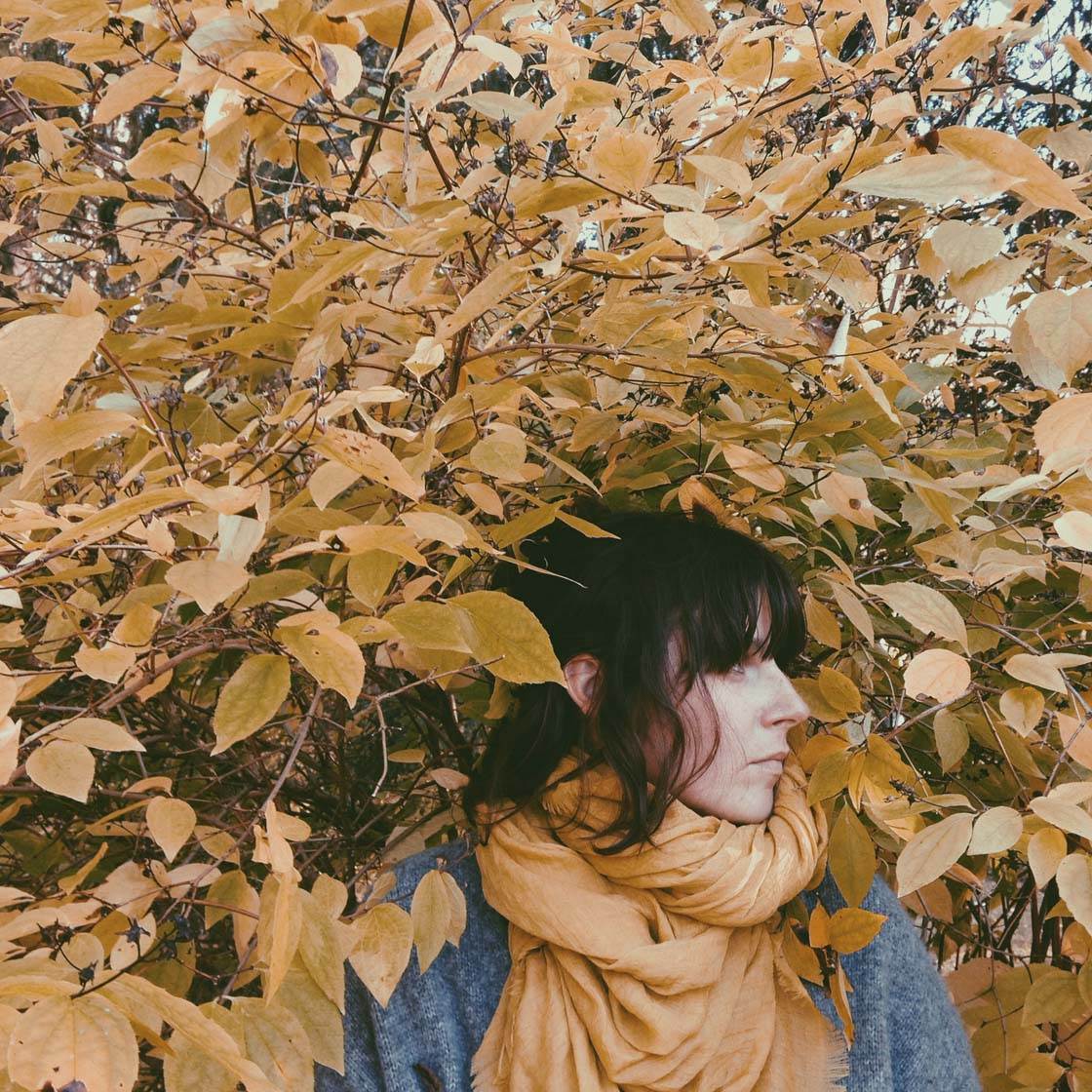
1. Explore Your Area To Find The Best Trees
Trees are the most obvious subject to photograph during fall because of the dramatic change in the color of their leaves. You’ll see an explosion of red, yellow and orange at this time of year, giving you endless colorful photo opportunities with minimal effort.
The great thing about this kind of photography is that you can find trees pretty much everywhere, whether you live in the countryside or a busy city.
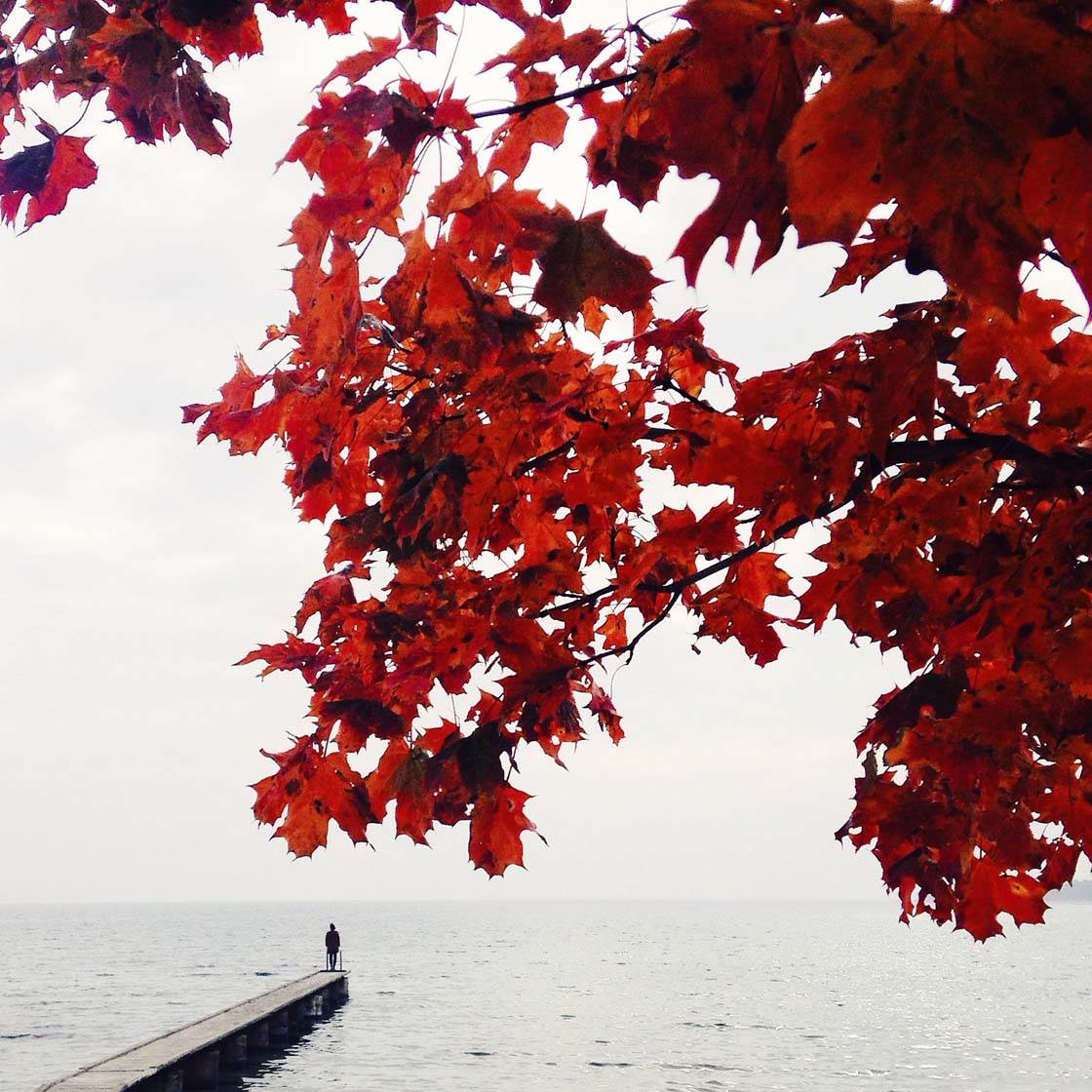
Explore your area to find the best trees for your photos. It doesn’t matter whether it’s a beautiful woodland, a dense forest, your local park or a simple tree-lined street.
Just make sure you put aside some time to get out and find the best locations while these beautiful colored leaves are on display.
Try to capture the trees during the entire fall season, from the time that the first leaves start falling to the ground, to when the tree branches are completely bare.

This scene will look completely different in a few weeks time. It’s worth capturing the same location at different points throughout the season so that you can document the changes.
When you’ve found a good location, experiment with different shooting angles and compositions to create the most interesting photos.
Tree-lined streets are great for creating symmetrical shots. Use the road or path as the central line of symmetry when composing your shot.

The road and the rows of colorful trees will act as leading lines, drawing the eye into the image and creating a strong sense of depth. The combination of symmetry, depth and vibrant colors is hard to beat.
If you’re shooting towards the end of autumn, most of the leaves will have fallen from the trees. But there will still be a lot of color where the leaves have fallen to the ground, so make sure you capture this in your photos.
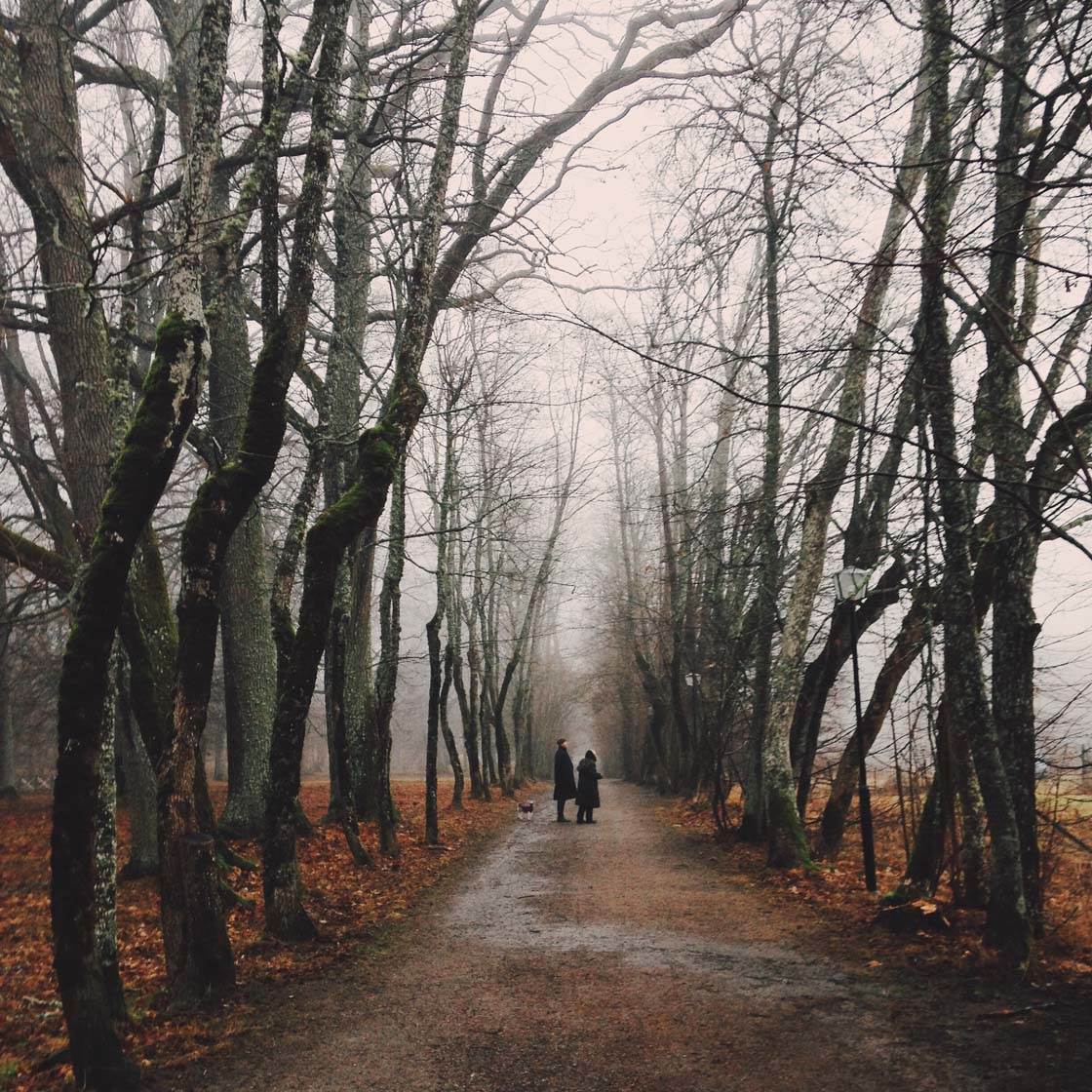
Bare branches add a sense of drama, so it’s definitely worth shooting during late autumn, just as winter is about to begin.
2. Find A Lone Tree
Lone trees are one of my favorite subjects to shoot. The lone tree is loaded with symbolism, and it will often leave the viewer with a stronger impression than if you had photographed a group of trees.
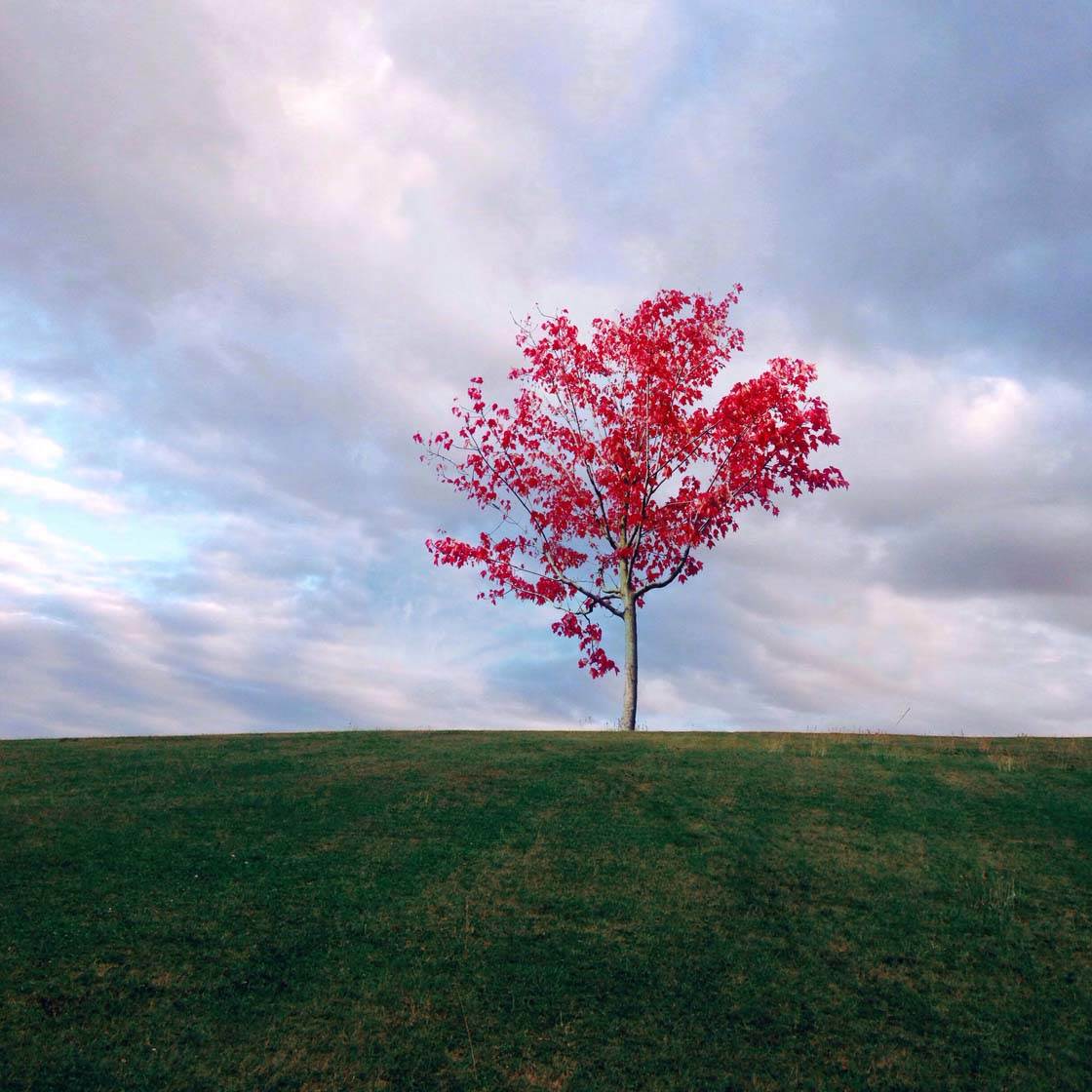
A minimalistic scene with a single tree allows you to create a strong composition with few elements in the frame. This kind of shot will always stand out amongst the crowd when sharing your images on social media.

Whenever you’re outdoors exploring the landscape or walking through the city, keep your eyes peeled for single trees that stand apart from other distractions.
If it’s not the right time to shoot, make a note of the tree’s location. You can then revisit it when you have more time or when the weather conditions are perfect.
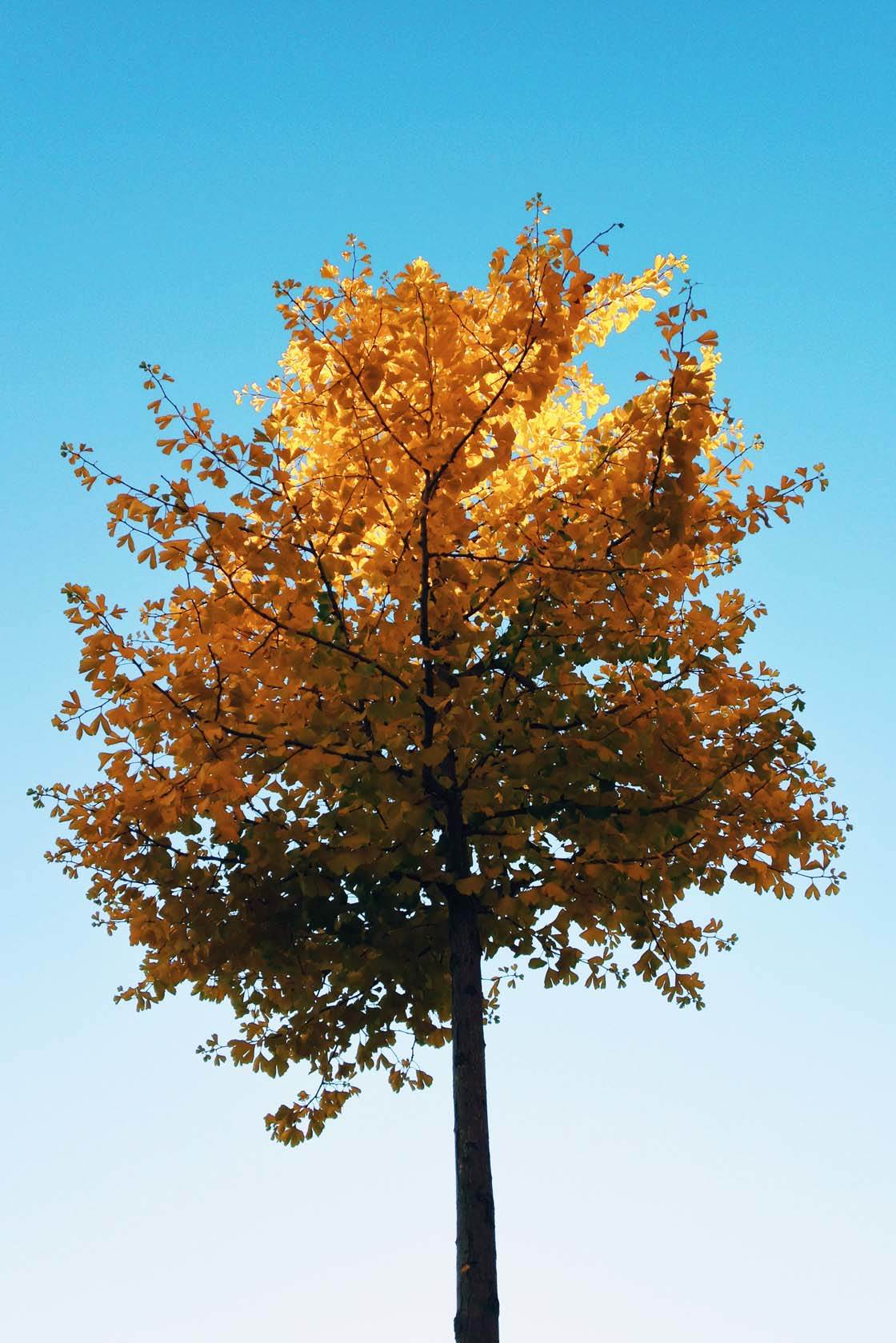
When photographing lone trees, try to eliminate any unnecessary distractions from the frame so that the tree remains the focal point of your image. Shooting from a low angle will help you to get more plain sky behind the tree.
Play around with the composition until you achieve an image that you’re happy with. You could experiment with placing the tree in the center of the frame, as well as using the rule of thirds to create an off-center composition.
There’s no right or wrong when it comes to composition – it’s all just a matter of taste. And a lone tree tends to look great however you choose to compose your image!
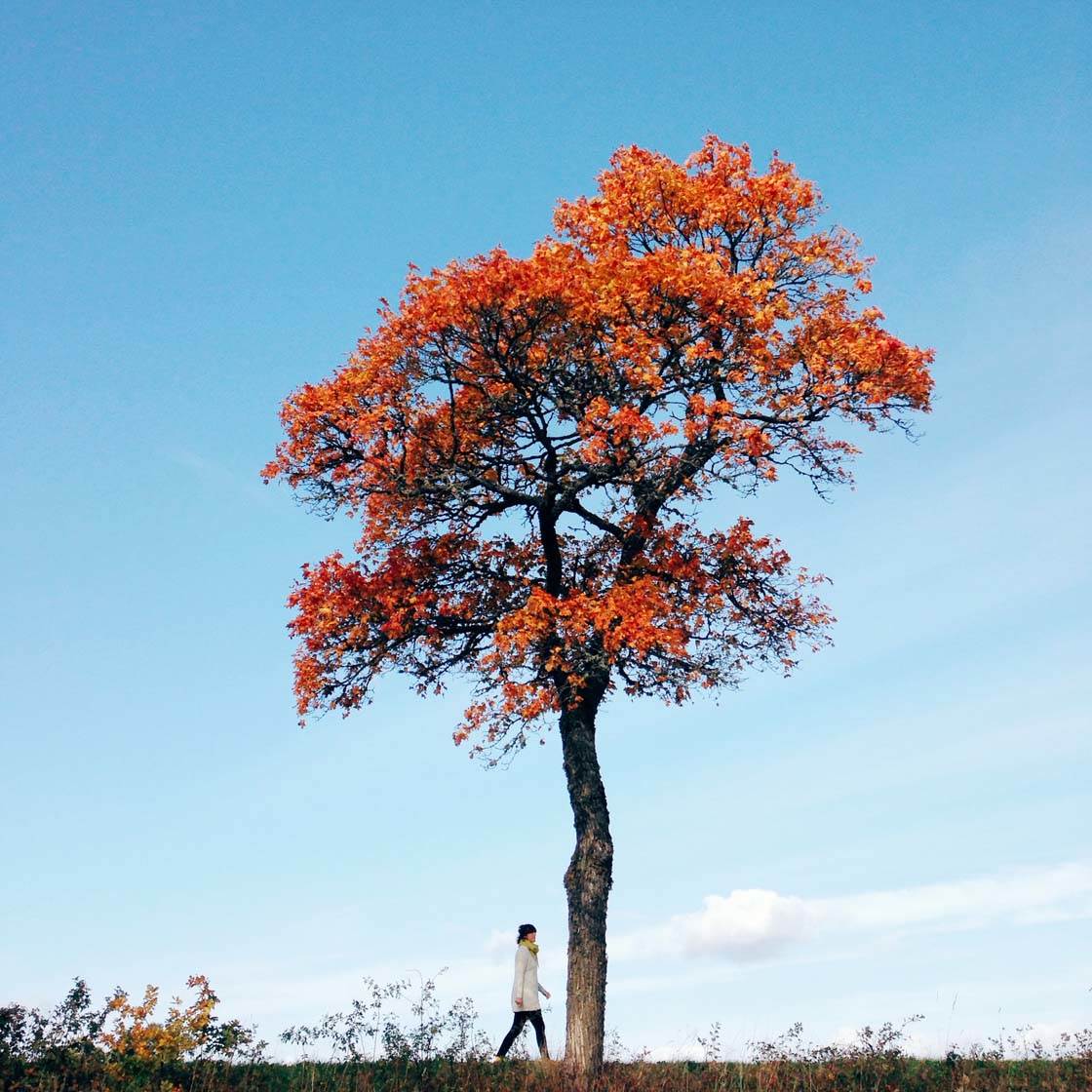
I often like to include a person in the scene when photographing a lone tree. This can create a more balanced composition, and it helps tell a more interesting story.
3. Shoot Leaves Against The Sky
A blue sky is a great complement to the strong, warm colors of the leaves at this time of year. Any kind of tree will work, as long as the colors of the leaves have started to change.
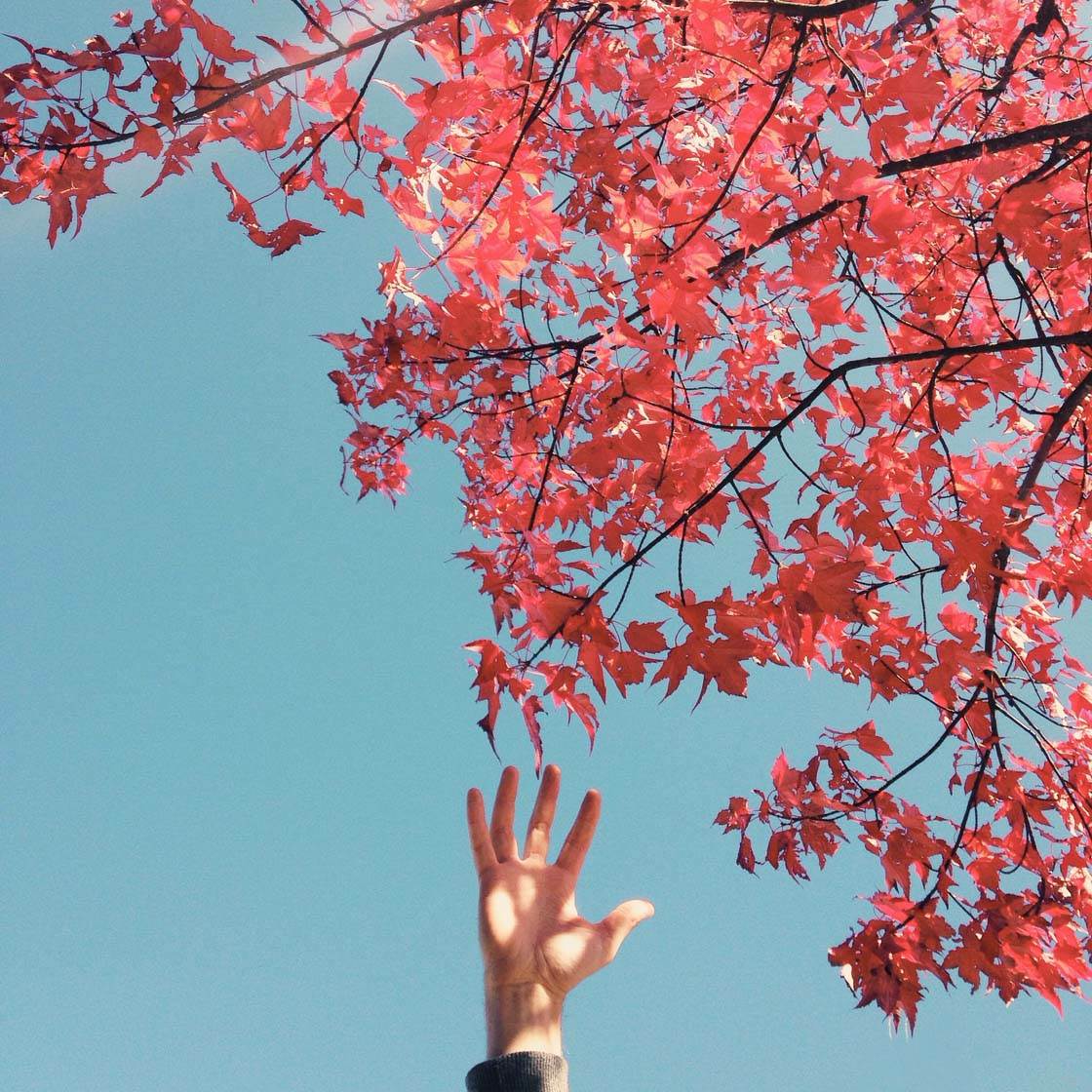
Experiment with different compositions to vary the amount of sky you include in your photo. A plain sky is great for creating a minimalist feel, so don’t be afraid to include a lot of empty space (sky) in your images.

Alternatively, try shooting straight up into the tree canopy to create a busy photo with an abstract quality. A bright blue sky will contrast wonderfully with the autumnal colors of the leaves, creating a beautiful and vibrant image.
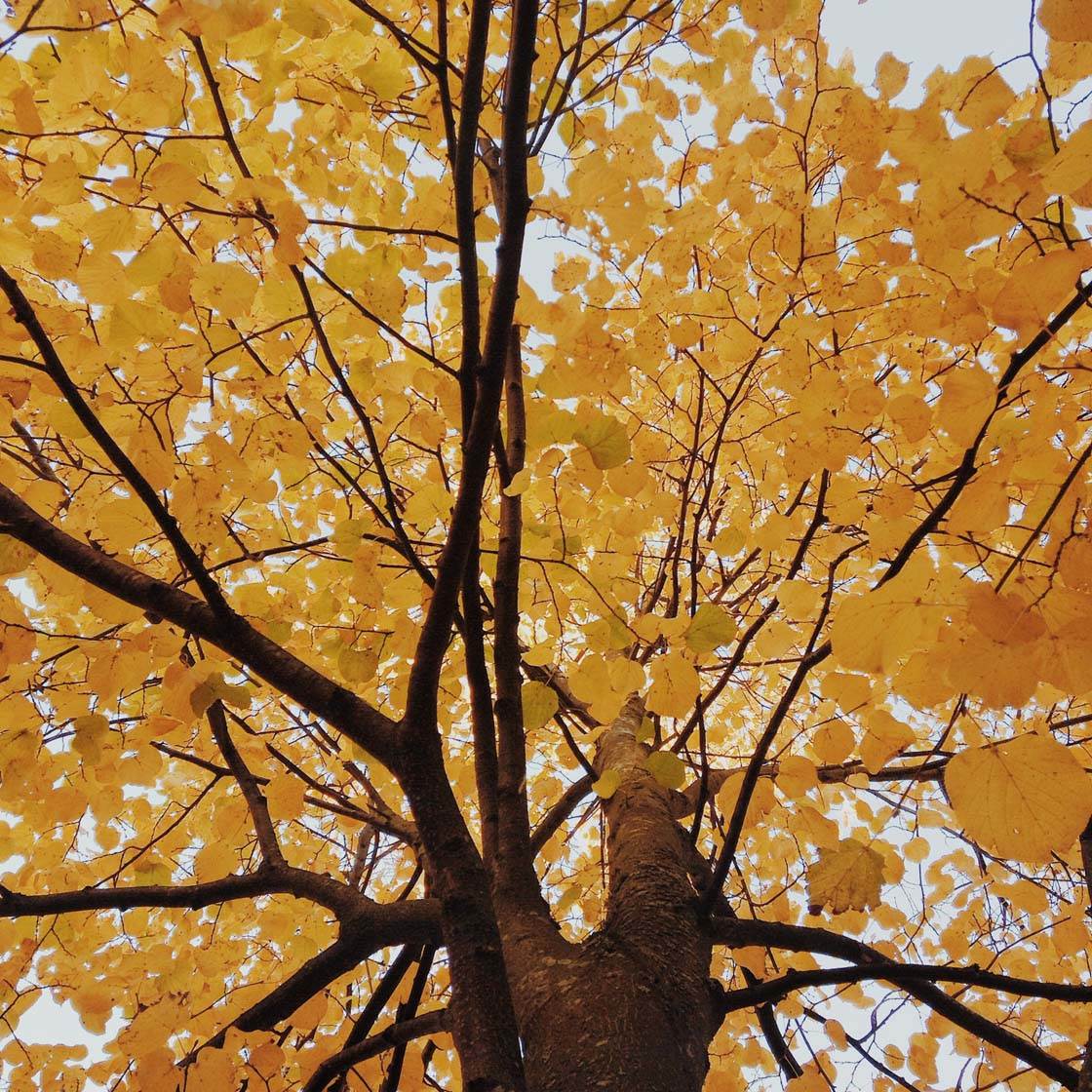
Even if the sky is dull, it can still work as a great background for your tree and leaf photos. Shooting with the light behind the leaves creates wonderful backlighting that reveal amazing color and detail.
4. Capture Fallen Leaves
Autumn is a time when the beautiful colored leaves start falling from the trees. Fallen leaves can be a great tool to help you tell an inevitable story… summer is over and winter is coming.
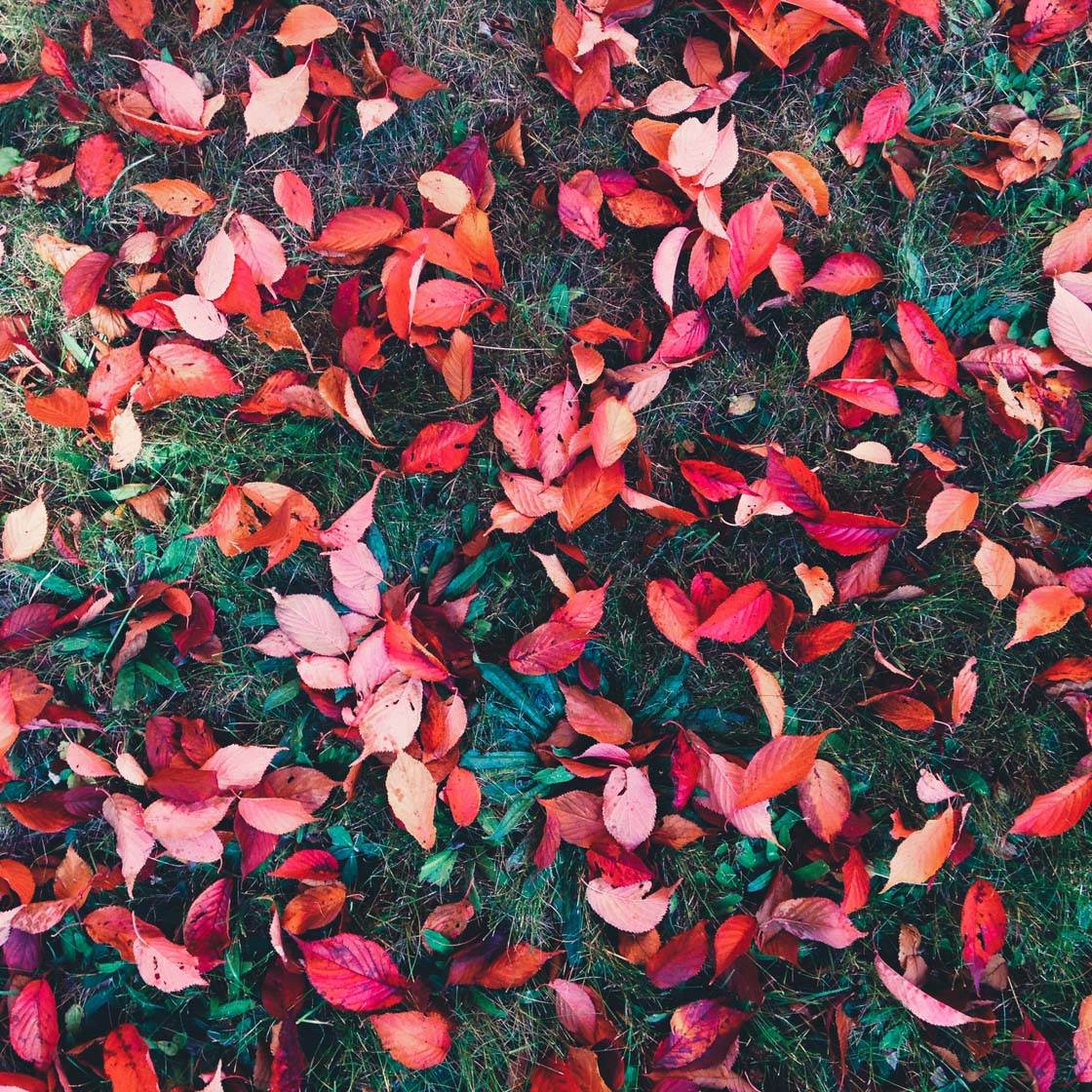
This fact is packed with emotions that most people can relate to, making your image more engaging. Photographing fallen leaves will create an emotional, moody and memorable photo.
There are many different ways that you can photograph fallen leaves. You can use them in the foreground of your photo like I did with the image below.
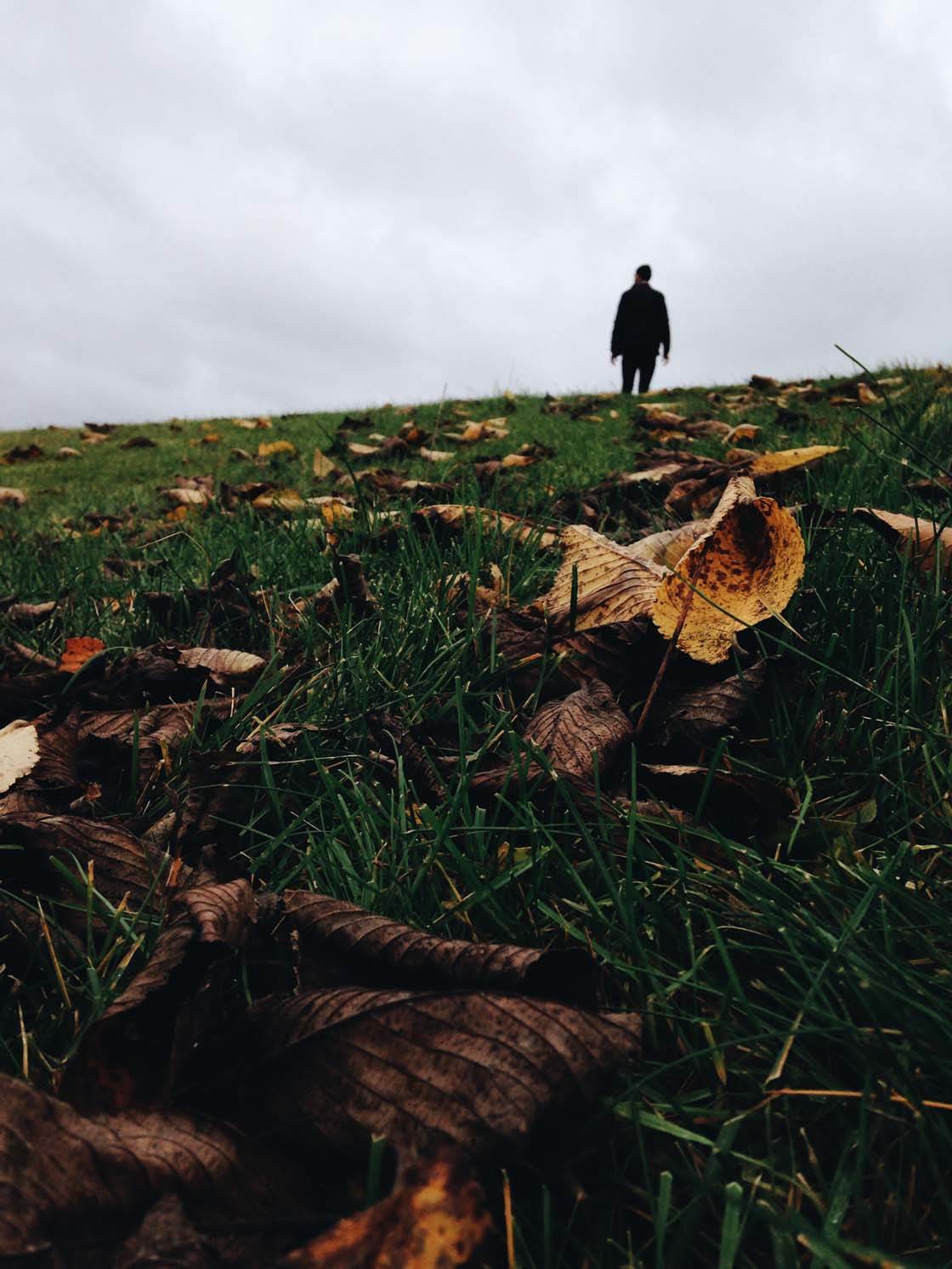
When creating this kind of photo, shoot from a low angle, and include something of interest such as a person or tree in the background. This will add depth and an extra storytelling element to your image.
Another effective technique is to shoot from directly above. This allows you to capture the wonderful variety of leaf shapes in all their glory.
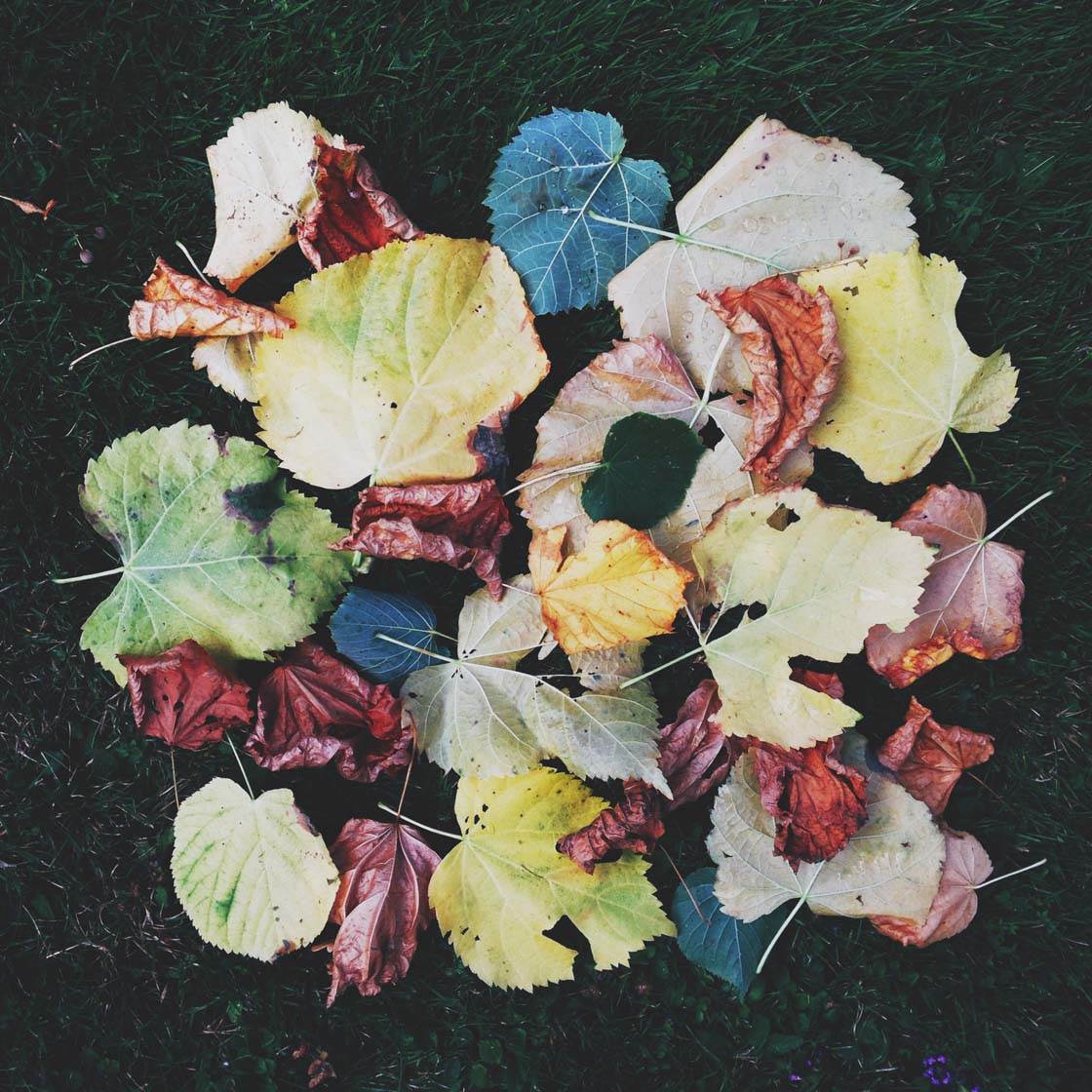
I often like to arrange leaves that I find into a pile on the ground. Or for a more strict and sober look, I’ll arrange the leaves into a simple pattern. For maximum visual impact, use a contrasting background such as grass or a path.
There are endless ways that you can arrange fallen leaves to create an eye-catching image. Adding one leaf of a different color is a great way to break the pattern and create a strong focal point.
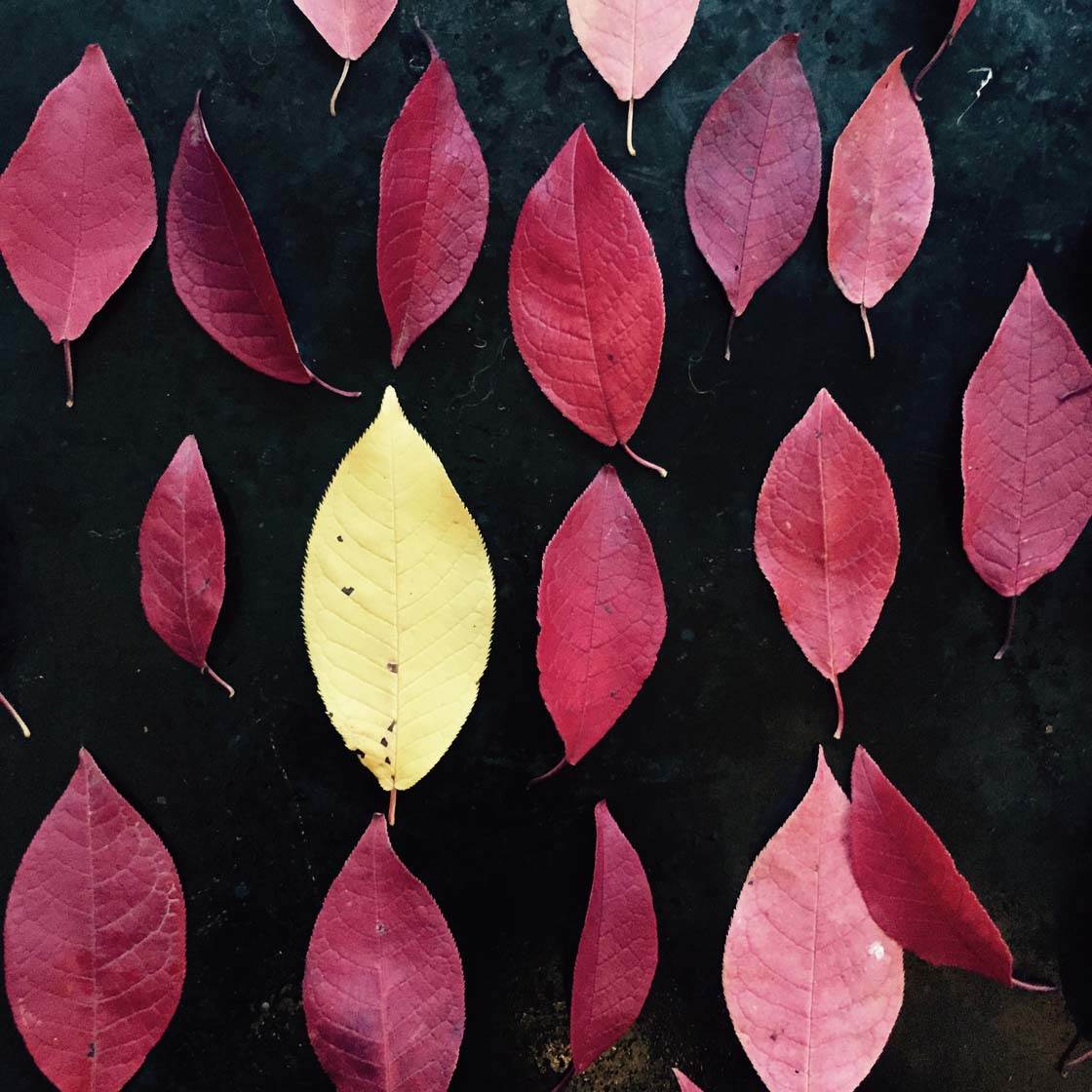
Don’t be afraid to get close to the subject. Leaves are rich in detail, so try to capture their intricate veins and texture in your photos.
To add an extra element of interest, how about including a colorful prop such as an umbrella? This will add a strong focal point to your photo, as well as creating more visual interest and meaning.
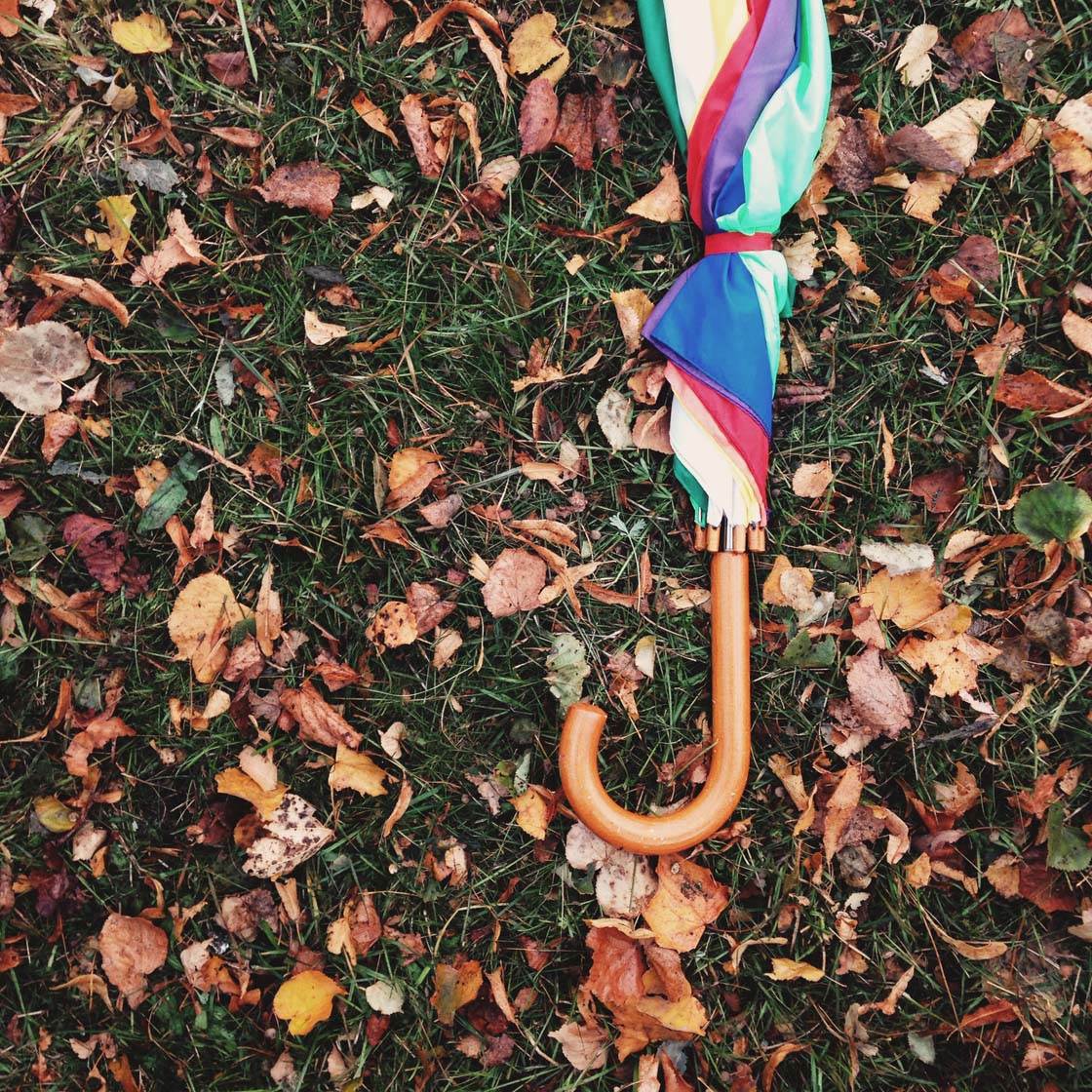
Finally, on a wet day, you could look out for puddles covered with fallen leaves. Wet leaves will appear glossy and the colors will be more vibrant.
5. Photograph A Single Leaf
Photographing a single leaf has a similar affect to using a lone tree as your subject. By singling out one particular leaf, you create a very strong subject that’s often more powerful than a group of leaves together.
When choosing a single leaf to photograph, try to select one that has a unique or interesting feature, such as the hole in this leaf that I found.
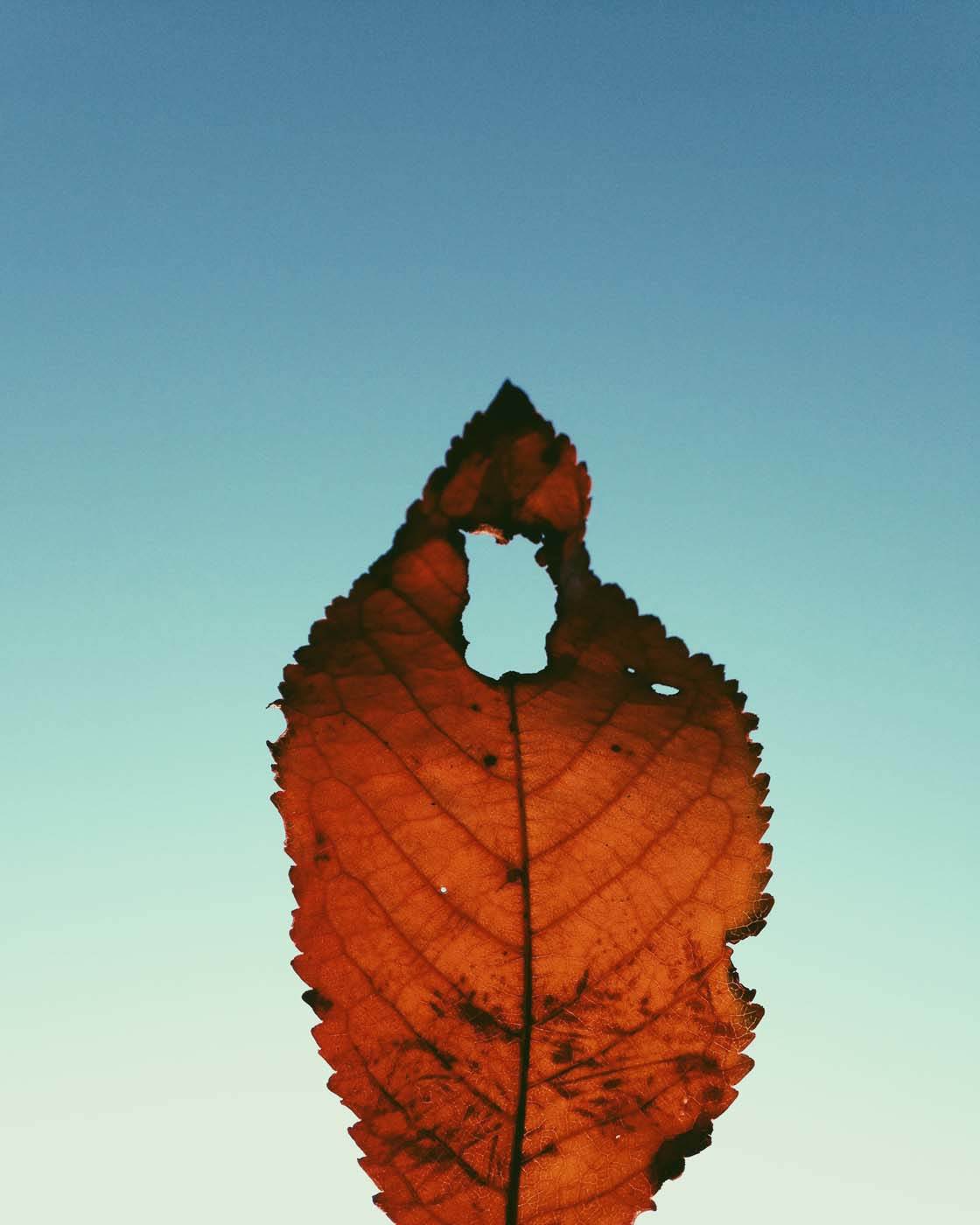
Once you’ve found your leaf, experiment with different ways to photograph it. You could hold it up against the sky so that you get a beautiful blue background. The light shining through the leaf will reveal patterns and texture that wouldn’t be visible without this backlighting.
Alternatively, place your leaf on a solid surface and photograph it from above. Try out different backgrounds such as grass, textured wood, pebbles, sand, concrete, water, or even your hand.

Rather than just photographing it from above, try different shooting angles. In the photo above I chose to shoot from this particular angle so that I could include the beautiful background scenery in the shot.
Another good option is to go out and collect leaves to shoot at home. This can make it easier to get a good photograph as you have more control over the background and lighting.
This is especially useful if you’re shooting on a blustery day when the wind will just blow your leaves away if shooting outside.
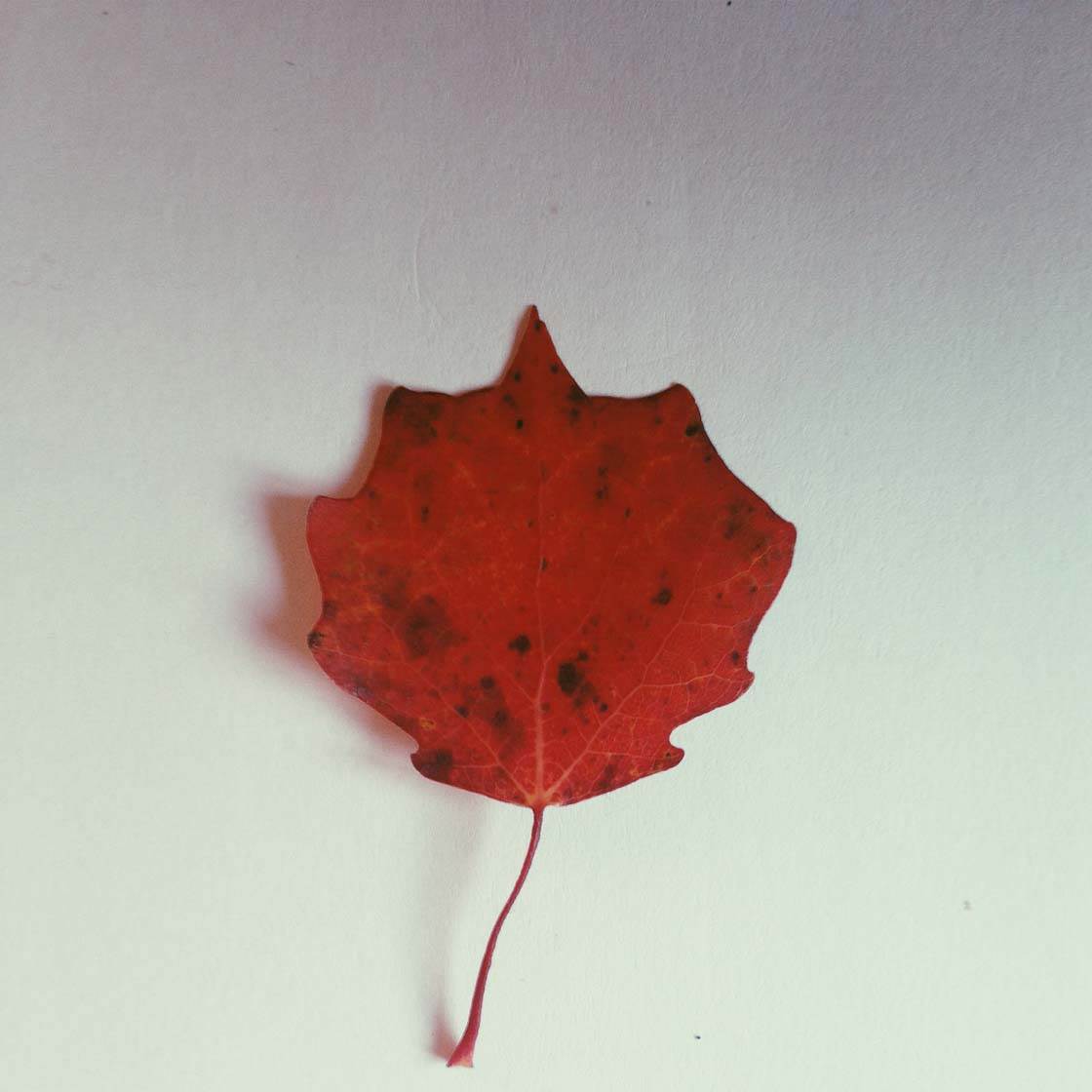
Once you get home with your chosen leaves, try out different backgrounds such as white paper, a white table cloth, or a baking tray. Try to use something that will contrast against the color and texture of the leaf.
When shooting in your home, think carefully about the lighting. Artificial indoor lights and lamps tend to ruin the colors in a photo, and can cast ugly shadows and reflections. The best option is to shoot near a window so that you can use natural light to illuminate your subject.
6. Take Outdoor Portraits
Fall is a great time for taking outdoor portrait photos of people. I love to use leaves and the colors of the season as a backdrop for my portrait photos.
Adding a human to the scene will give your photo an extra dimension. It helps the viewer connect with the image, naturally making it a stronger photo.

There are many ways that you can use an autumn scene for the backdrop of your portrait photos. You could simply photograph a person standing in a landscape full of vivid colored trees.
But also try doing something a bit different. You could ask your subject to lie on the ground amongst the fallen leaves, then photograph them from directly above. Or ask your subject to stand in front of a tree or bush, using the leaves as an interesting backdrop.
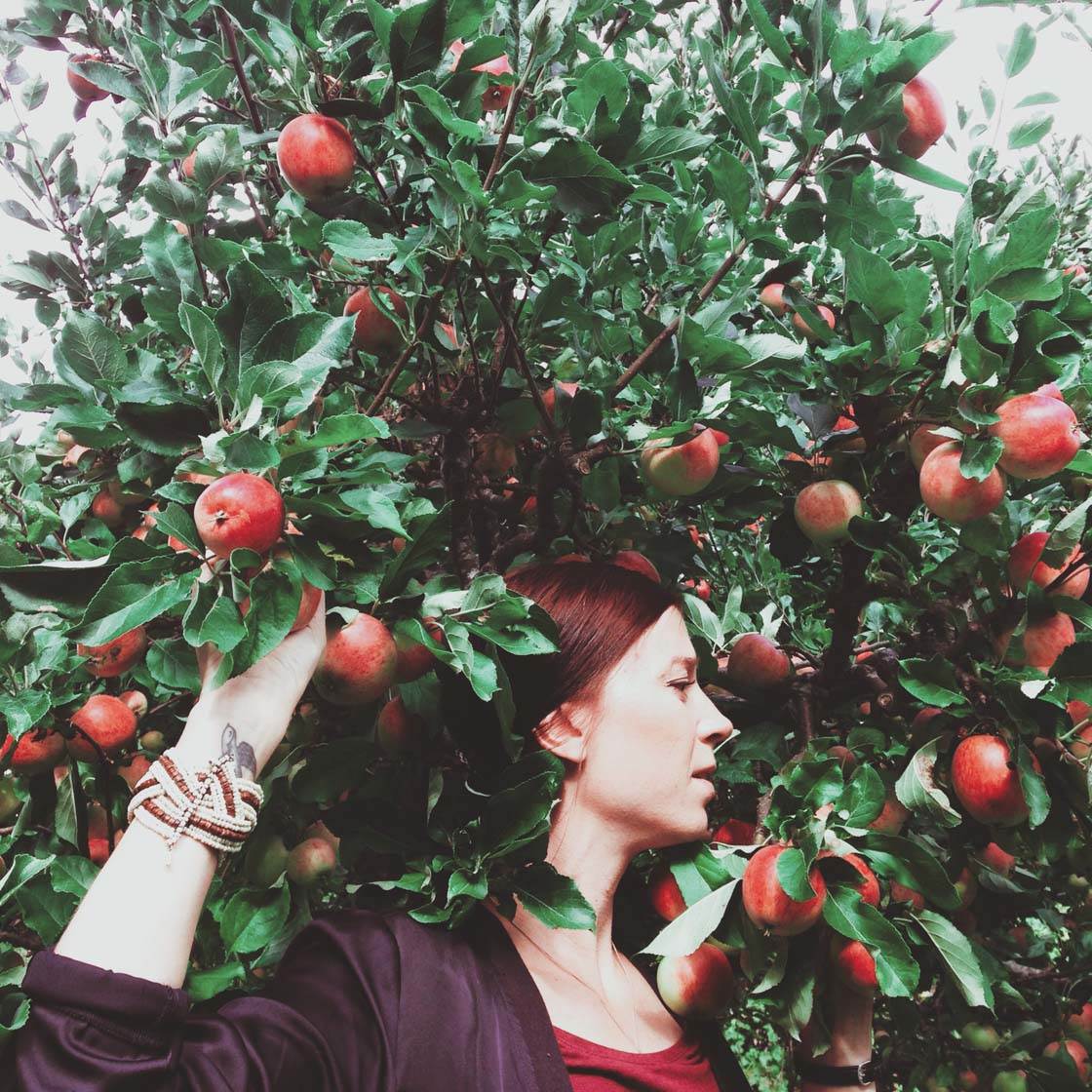
Here I chose to put my model in front of an apple tree. I wanted to capture the season by highlighting what this time of year has to offer. The apples makes a distinct visual impact, and they tell you that summer is over. They also add a wonderful pop of color.
Look for subjects that really represent the season, and use them to your advantage. Fill the frame with your subjects to create an intimate feel and a strong theme in your portrait photos.

To get an extra intimate feel, I sometimes try to color-match the subject with the background. In this photo, the yellow scarf of my subject works as a link to the backdrop, making the two blend together in perfect harmony.
So catching the season is more than just visuals and colors. It’s a great opportunity to tell a story about what’s going on or where we’re heading.
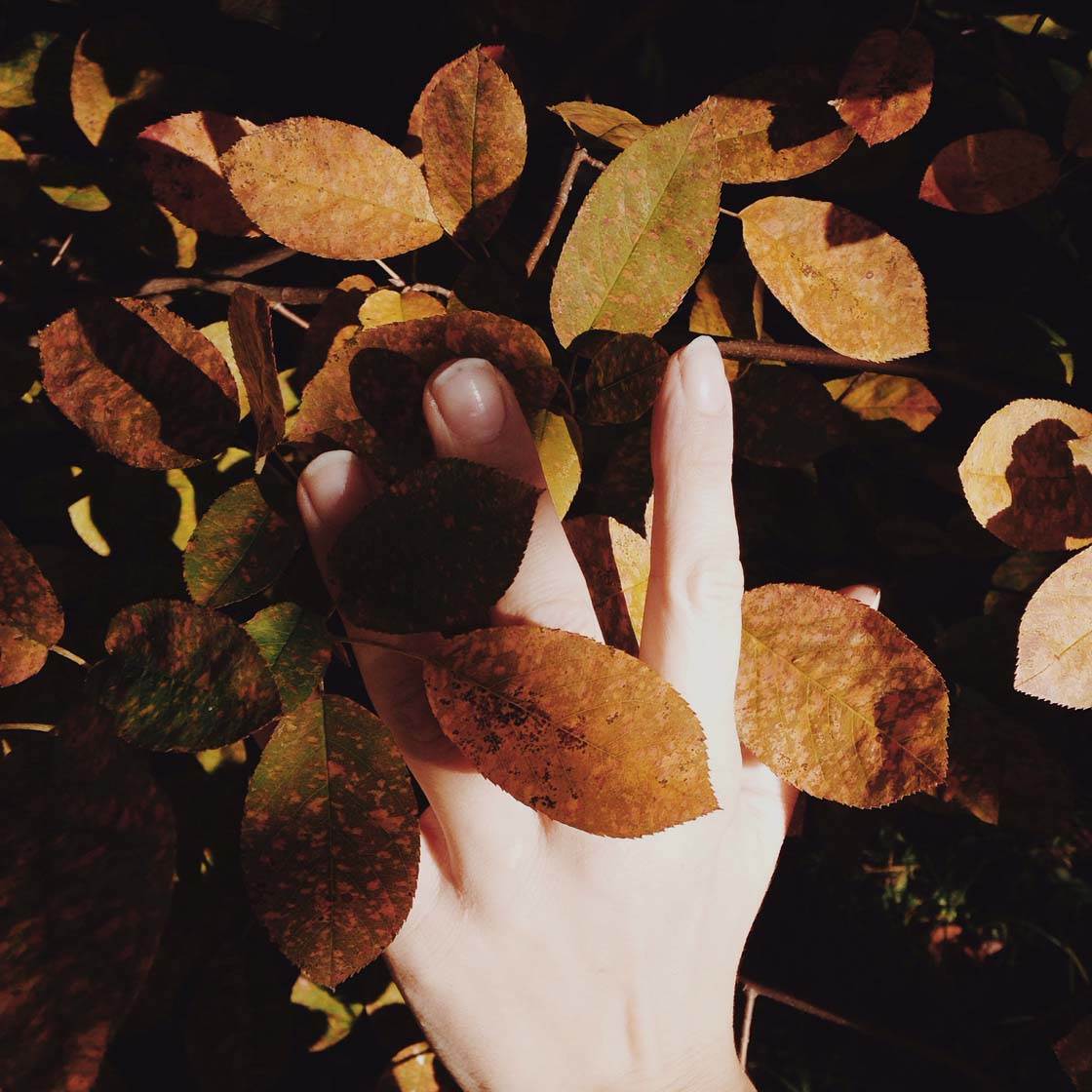
Remember that photographing people doesn’t just have to involve full body or head shots. A simple image of a hand reaching into a pile of fallen leaves can have a powerful impact too.
7. Shoot In Mist & Fog
Photographing during fall isn’t all about capturing the stunning colors of the foliage. It’s also about taking advantage of the changes in the weather.
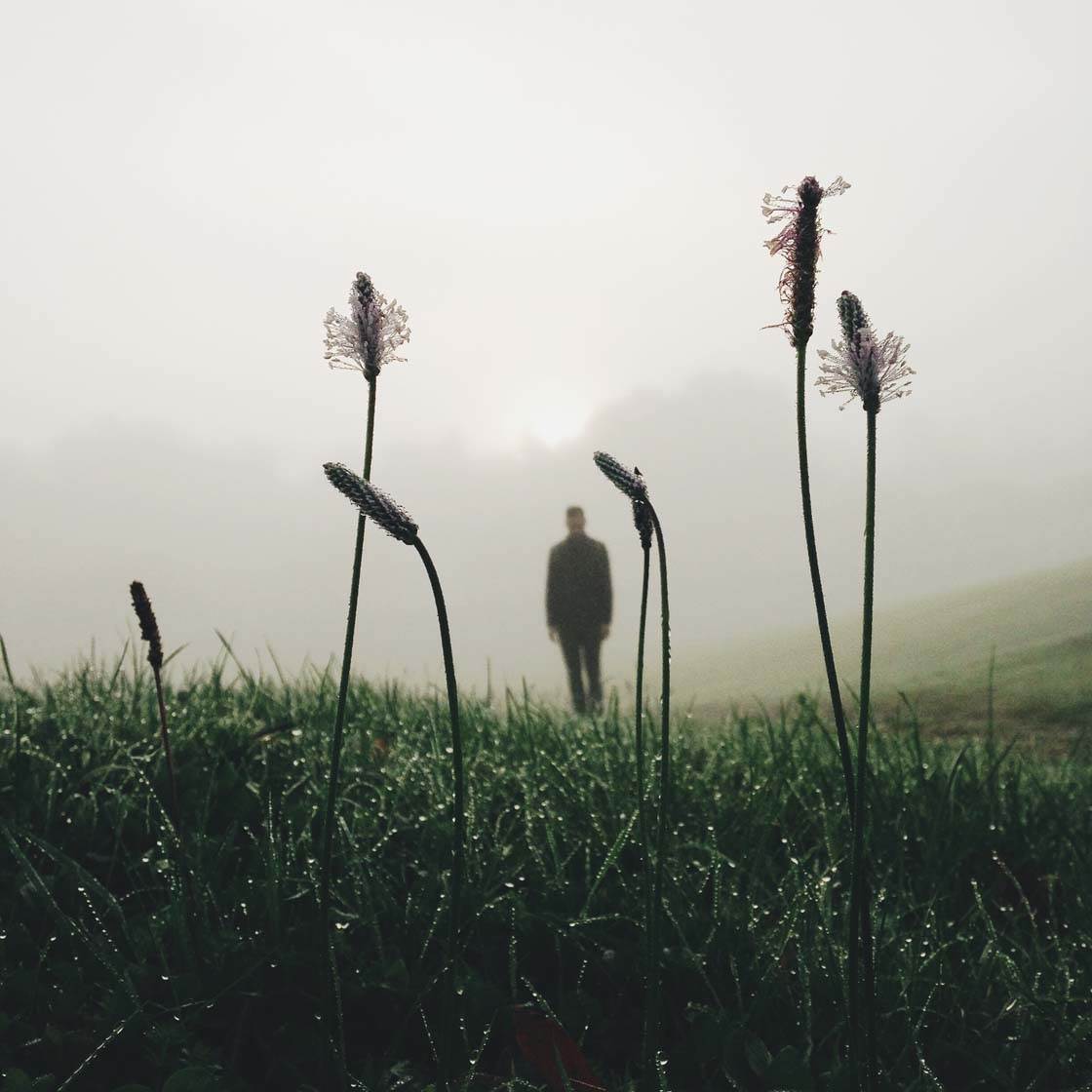
Mist and fog start to appear more frequently in many locations during autumn, and this provides a fantastic opportunity to create a moody and mysterious atmosphere in your photos.
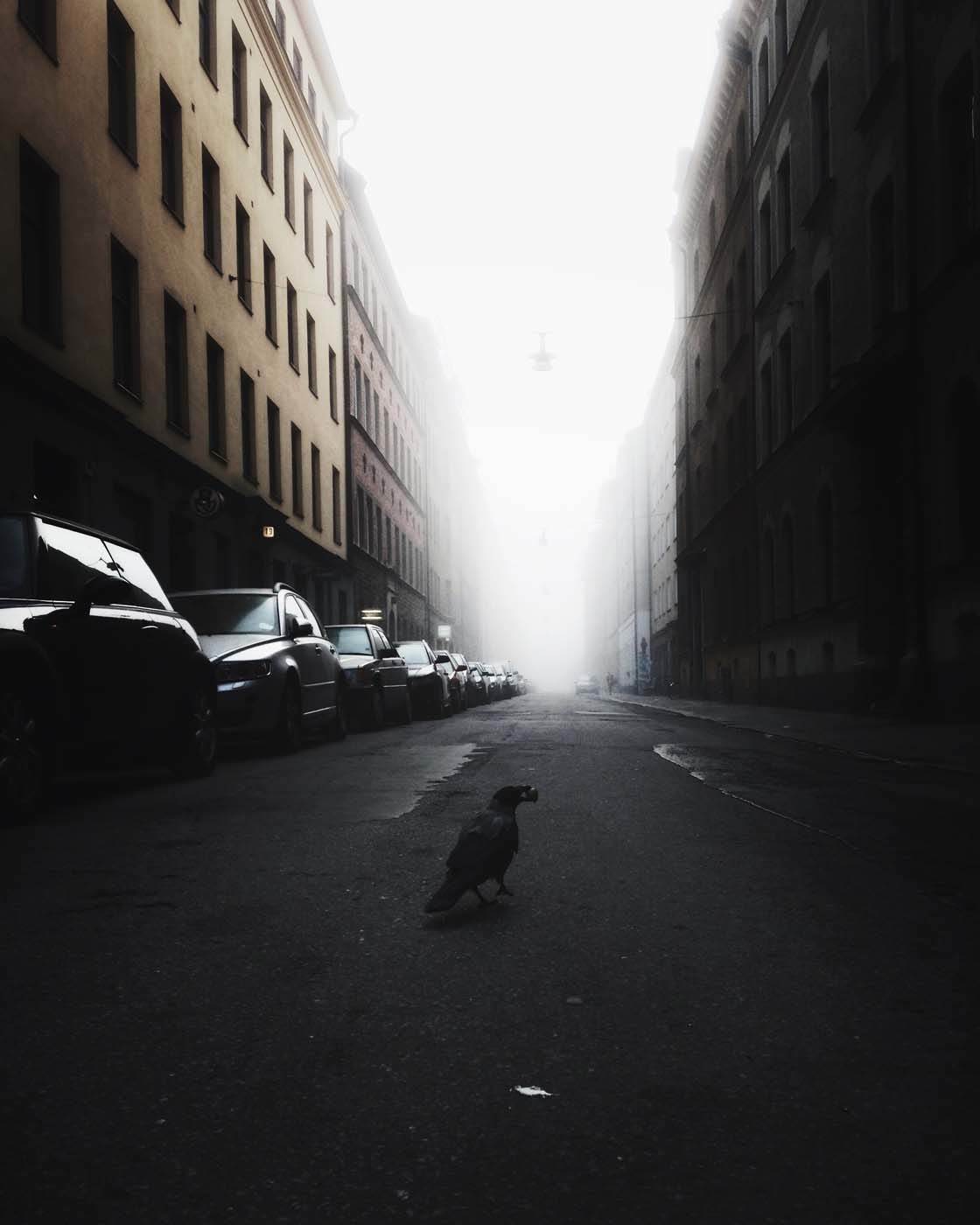
Whether you’re shooting landscapes or urban environments, fog will completely change your surroundings. This can add a strong sense of drama and foreboding to your images.
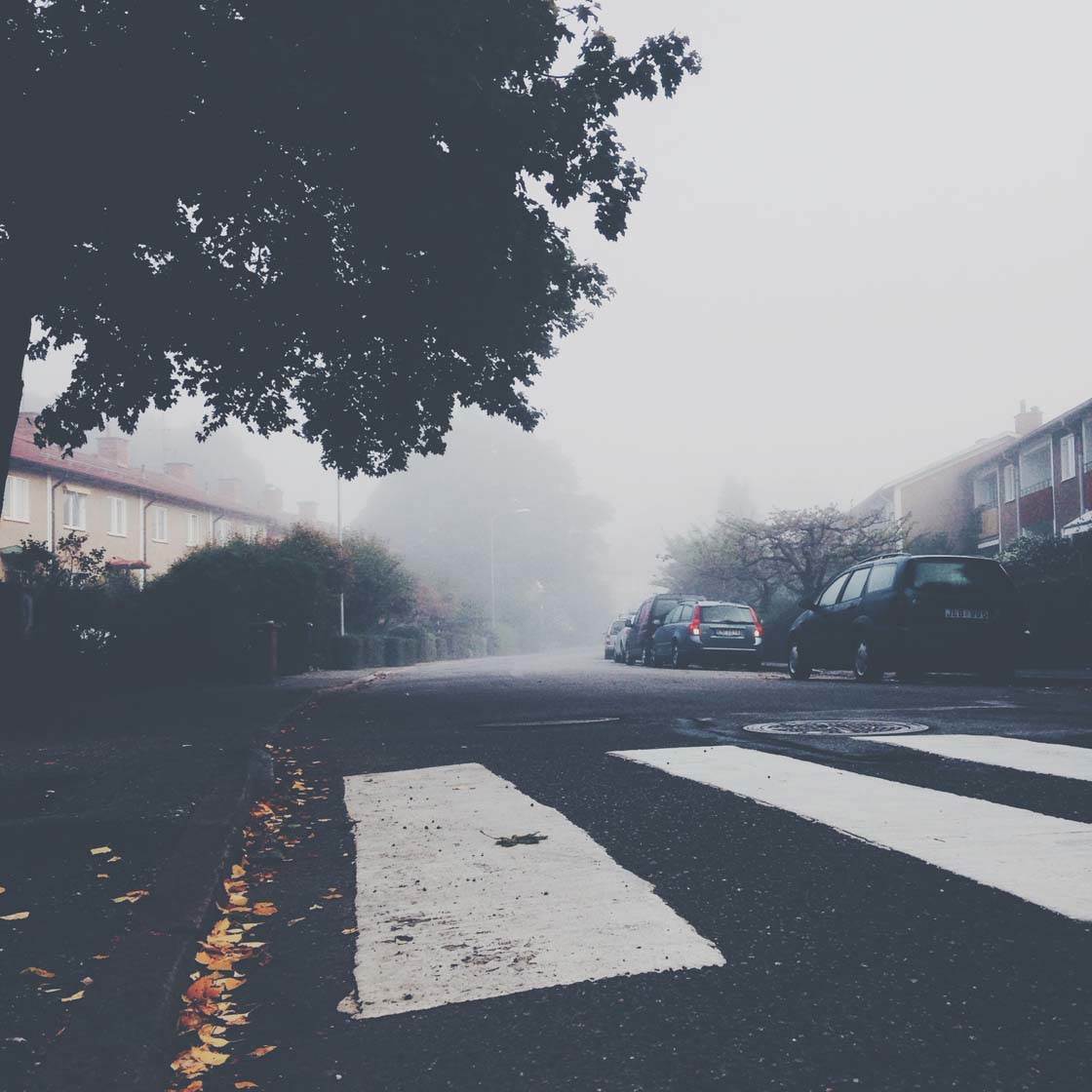
A completely quiet and empty street will definitely get the viewer’s mind going. The same view in sunshine wouldn’t get as much attention.
Depending on the thickness of the fog, the visibility of the landscape will differ greatly from normal weather conditions. This will give you the opportunity to really put emphasis on certain objects that would normally become lost against the distracting background.
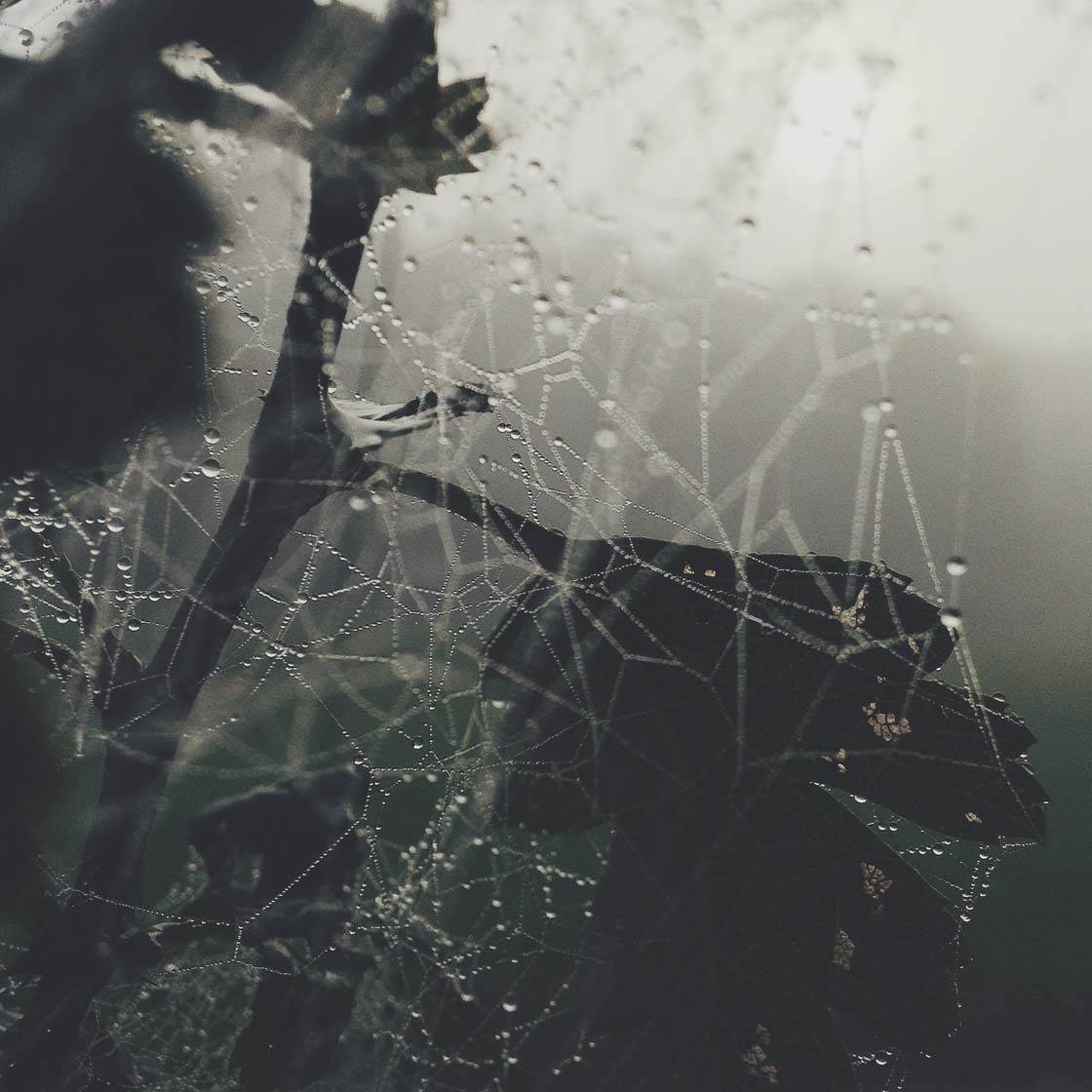
During this kind of weather, venture out early to capture the best light and fog. You’re also likely to find beautiful dew drops on cobwebs, grass and leaves on a foggy morning.
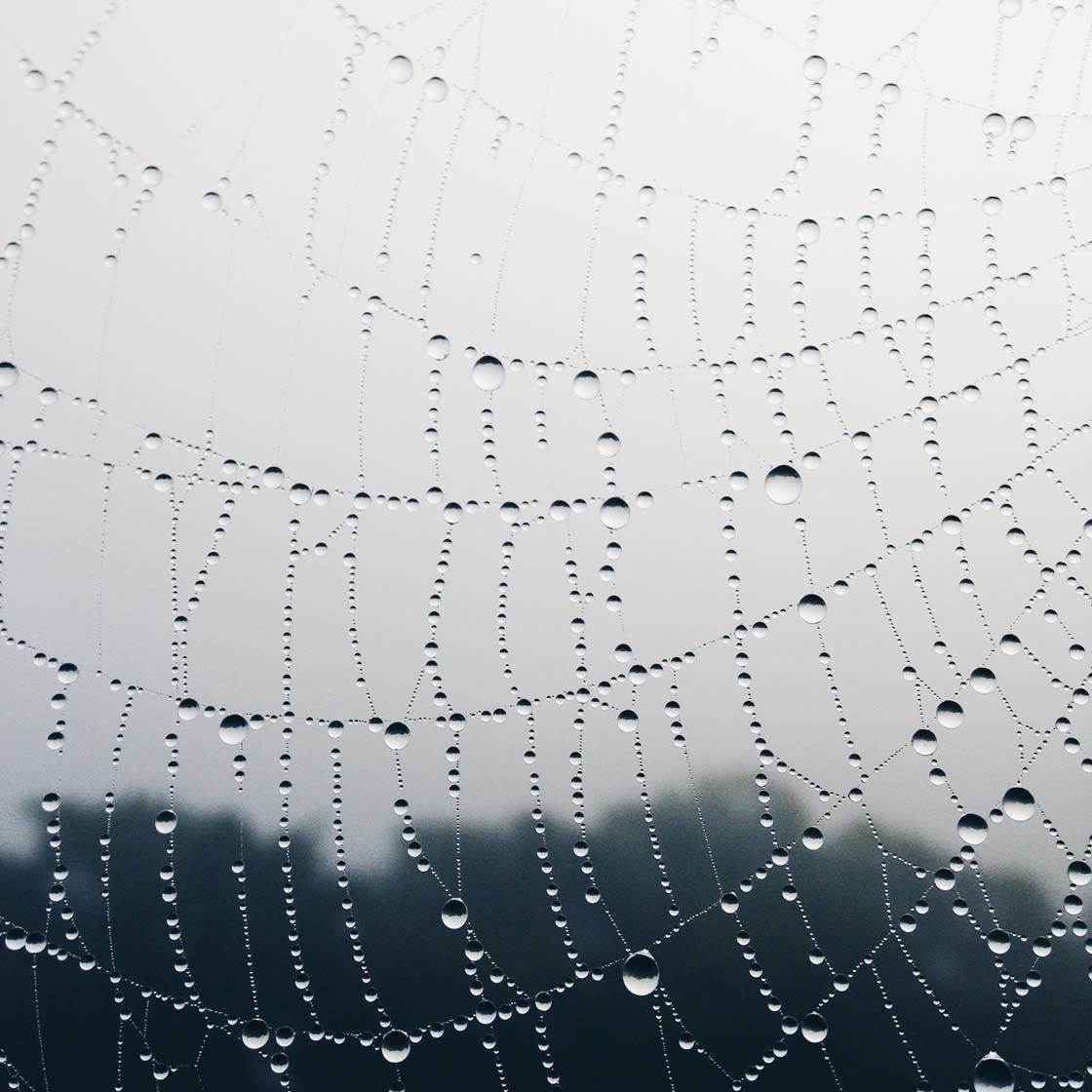
Adding a person into a foggy landscape is a great way of creating a mysterious and dramatic story. If the light is right, the person will appear as a silhouette in the fog, naturally making them the center of attention.
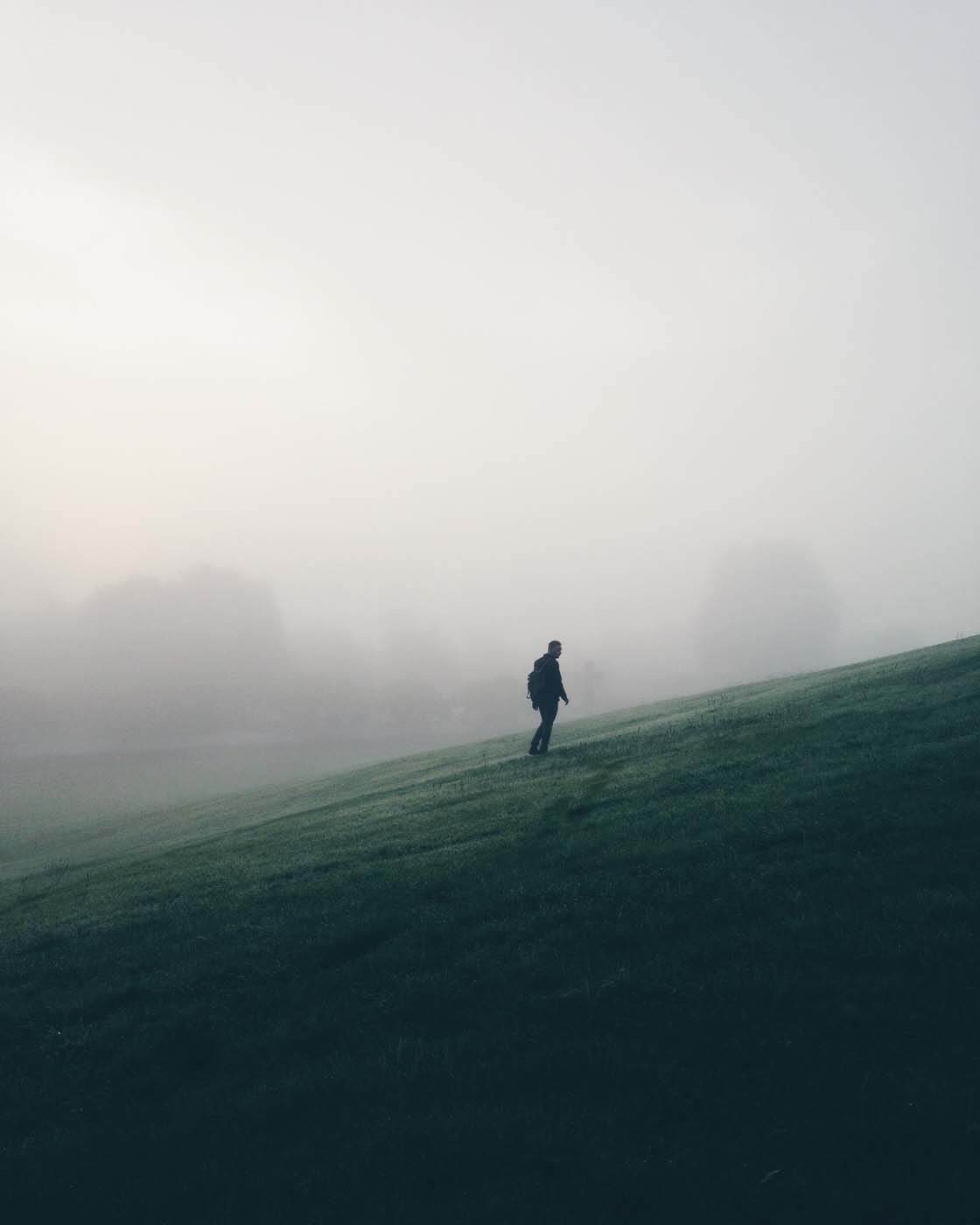
Besides the strong visual impact, the viewer will most likely wonder who that person is and what caused them to be there in the first place. This helps to engage the viewer, making them more intrigued about your photo.
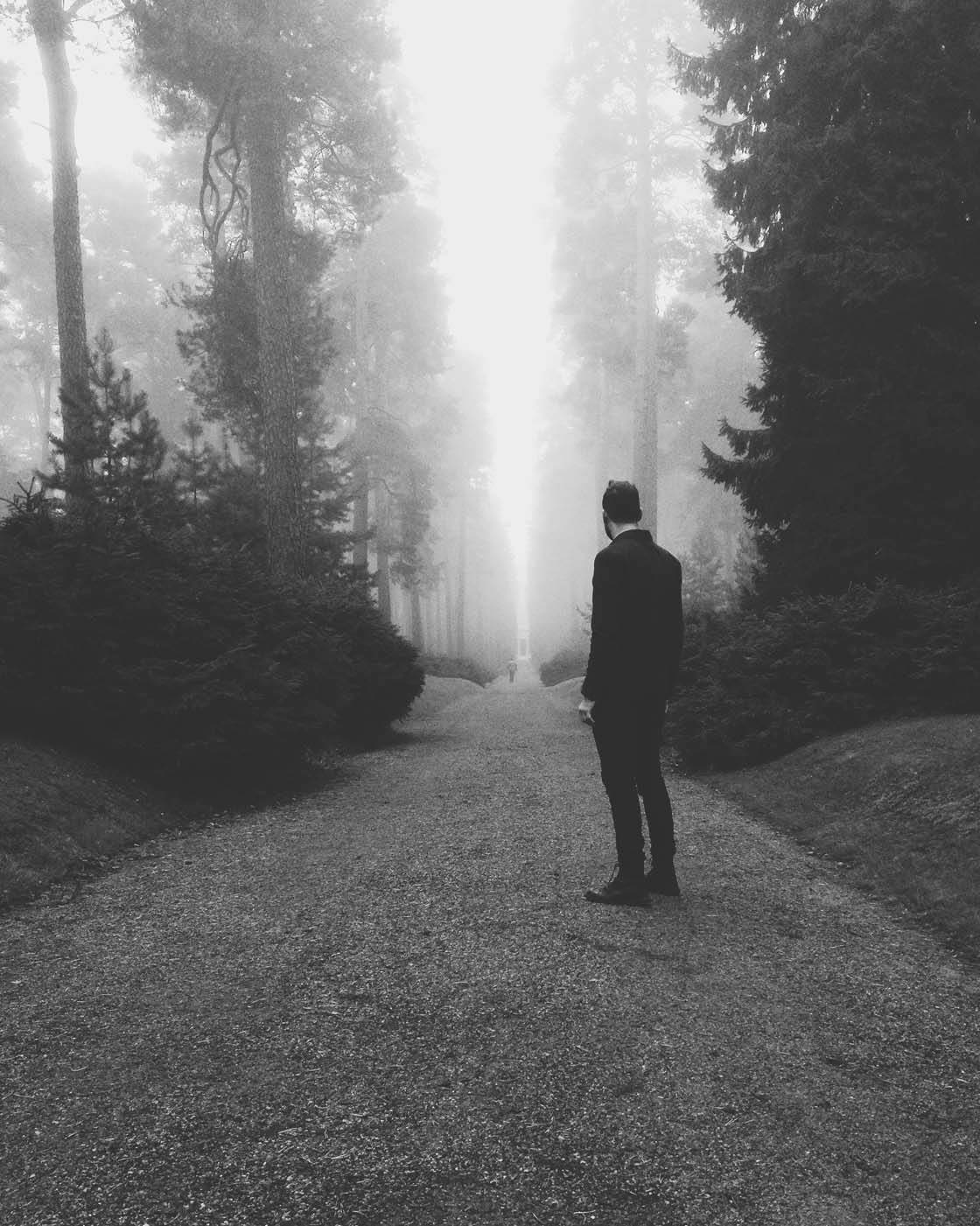
Try adding a person into a foggy scene in different locations, such as a plain field, amongst trees in a forest, or on a deserted street.
Whatever your chosen location, fog is a tool that will help you take the most beautiful photos. Just remember to keep your hands steady to avoid camera shake and blurry photos in these low light conditions.
8. Enhance Colors In Post-Processing
I’m not a big fan of enhancing or changing the original colors too much when I shoot nature. But when it comes to fall photography, it’s a different story.
Depending on what kind of mood you want to create, you can either make the colors more vibrant or more muted. You can easily do this using many photo editing apps, including Snapseed and VSCO Cam.
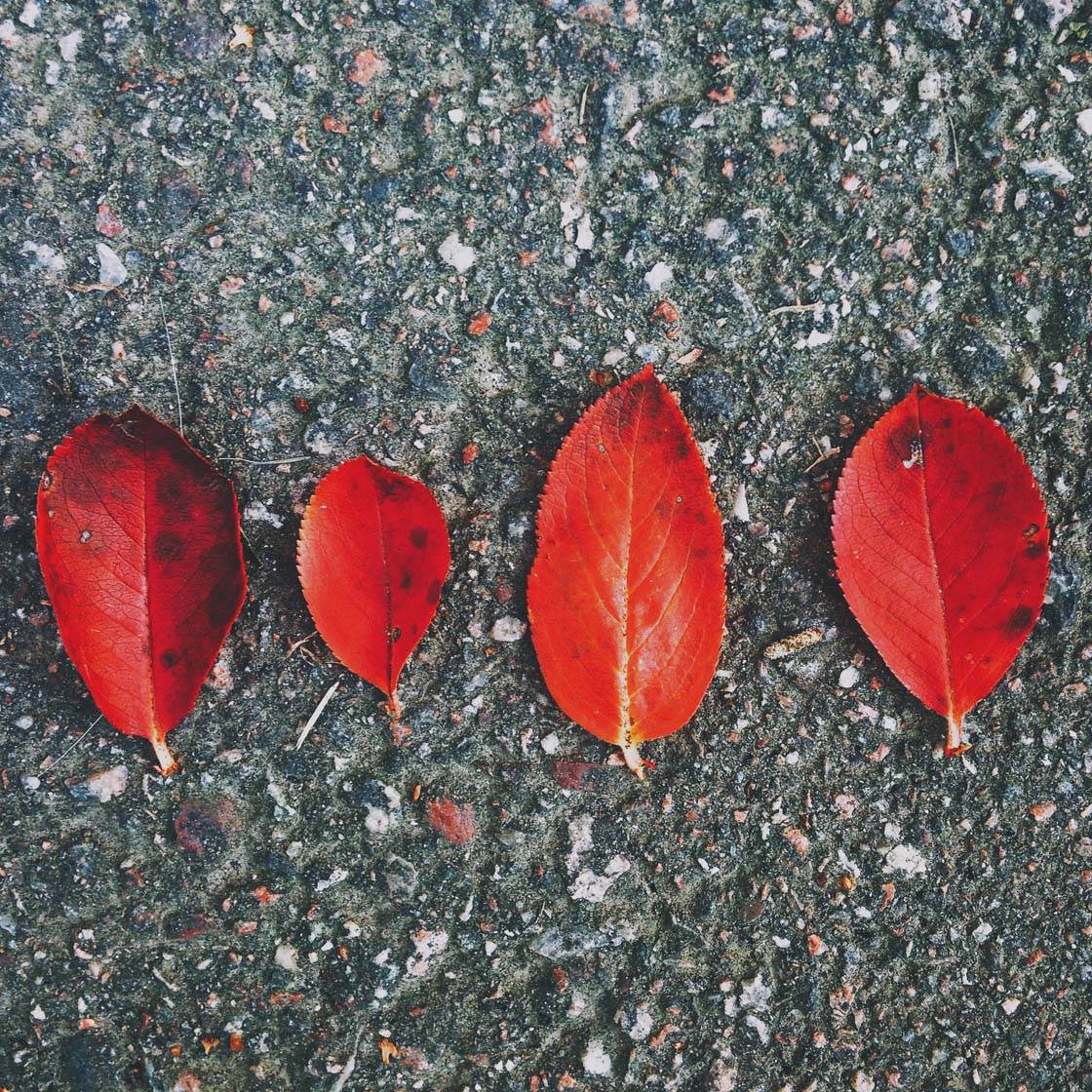
If the leaves in your photo appear a bit faded, you can create richer and more vibrant colors by pushing up the contrast and color saturation.
This will really highlight the colors without creating an unnatural or exaggerated look. I mostly use the VSCO photo editing tools and VSCO filters.

For this photo I wanted to warm up the colors to really make the leaves stand out against their bleak surroundings. So I pushed up the color saturation and warmth settings.
Sometimes you might want to tone down the natural colors in your photo. Subtle colors will create a different kind of mood, and it’s definitely worth trying this out on some of your photos.
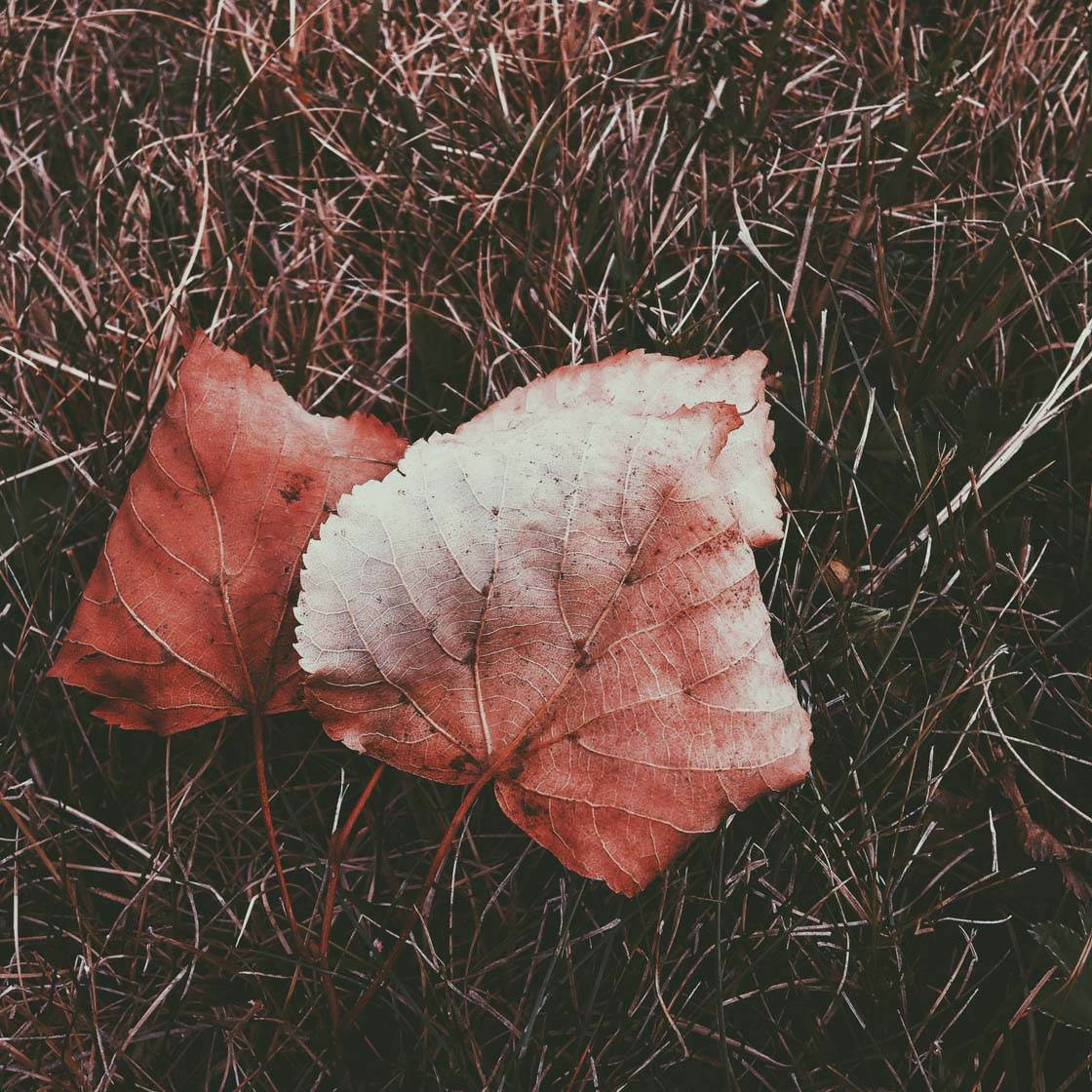
Here I choose a filter that washed out the colors a bit. There’s less contrast between the colors in this photo, creating a more tranquil mood.
You can use filters to quickly adjust the colors, or take full manual control using the adjustment sliders for color saturation, contrast and warmth.

The aim with editing your photos is to bring out the beautiful fall colors in such a way that it enhances the mood that you intended to create when you took the picture. If you can achieve that, then your photo is a success!


My favorite time of year for photography! Thanks for the great tips and beautiful photos Calle 🙂
Great photos and tips, Carl! I’m really looking forward to getting out and finding some beautiful fall scenery. I love the human element in your photos, it adds so much to the story. Thanks!